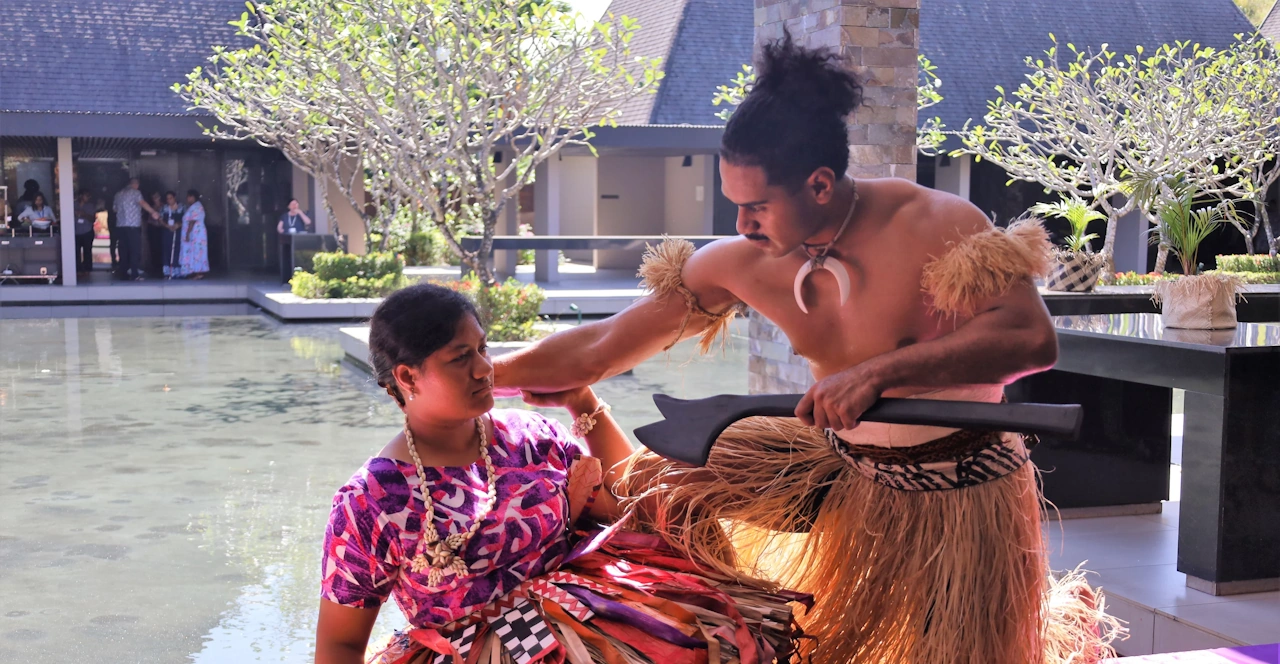Mereseini Rakuita, SPC’s Principal Strategic Lead – Pacific Women keynote address on Women In Maritime day 2022
18 May 2022“If we are to make any meaningful changes to the participation of women in the maritime sector, we must be fully cognisant of the barriers that do exist.”
Mereseini Rakuita, SPC’s Principal Strategic Lead – Pacific Women, shared this comment in her keynote address at SPC’s panel discussion to commemorate the first International Day for Women In Maritime (ID4WIM) on 18 May 2022.
Ms Rakuita’s keynote reflected this year’s theme “Training, Visibility, Recognition: Supporting a barrier-free working environment.” Following are some of the highlights from her keynote address.
(Keynote address – check against delivery) – Read also the speech on SPC’s Human Rights and Social Development Division’s Website.
History records Women’s participation in the maritime workforce as far back as the 9th century, interestingly, as pirates, as Vikings, or posing as men onboard ships to gain passage to destinations. In 1978 the first woman successfully circumnavigated the globe, solo, and since then sporadic records of women being firsts in varied activities in the maritime sector became newsworthy.
In the Pacific, women were the best marine engineers of traditional navigation weaving the sails of our great traditional canoes that traversed our vast ocean. The sails of these canoes had the best nautical aerodynamics of any sailing craft which allowed our ancestors to swiftly navigate large canoes that could carry up to three hundred people at once. These sails also informed the modern day sail we use today so the connection to women in maritime in our Pacific is personal.
Today, however, women represent a mere 1.2% of the global seafarer workforce. This translates to a 45.8% increase compared with the 2015 status quo[i]. Whilst the growth is something that we should celebrate, we must also be acutely aware of the very low representation of women in this traditionally male-dominated area
In the Pacific it is estimated that less than 10% of persons working in the maritime sector are women and employed predominantly in support, administrative and mid-level management roles. Of these 10%, 5% are employed in shipping companies, agents, supply and freight supply chain companies; less than 2% are employed as female seafarers serving in national fleets; and less than 1% serve in foreign going vessels.
It is because of our universal acceptance and will to enhance the representation and visibility of women in maritime that we celebrate the International Day for Women in Maritime (ID4WIM) today.
The SPC’s Geoscience and Energy Division is one of the leading regional teams dealing with maritime matters in the Pacific and is the implementing body for the International Maritime Organization (IMO) Integrated Technical Cooperation Programme in the Pacific region.
Genesis of the International Day for Women In Maritime
The genesis of the International Day for Women In Maritime emanated from an idea in the heart of the Pacific, to a vision creating a significant rippling effect across the world, when back in April 2016, SPC with the support of IMO, organised the Regional Conference for Pacific Women In Maritime in Tonga. This Conference recognised and adopted a Resolution to “Promote a National Day for Pacific Women In Maritime”.
So why do we need to increase the effective participation and visibility of women working in the maritime sector? As a region we share one Ocean. An ocean that provides the backbone for the livelihood of a majority of Pacific people. In order to fully harness the potential that the Pacific Ocean holds for the wellbeing of pacific islanders, it is imperative that all relevant sectors of the Pacific economy are given an equal opportunity and footing to partake in maritime activities.
In recognition of this truth, in 2019, transport ministers from around the Pacific endorsed the Regional Strategy for Pacific Women in Maritime 2020-2024. This strategy has the overall objective of regional coordination and providing guidance on progressing gender equity and equality in the pacific maritime sector. This commitment includes improving equal opportunity and safe working environments onshore and offshore for women working in the sector. So we have the political will regionally, and that’s a huge first step.
Our connection:
The connection to women in maritime in the Pacific is personal and one that we must fully recognise as a strength to our region in a genuine way. That’s what today is really about, so on behalf of the Pacific Community, I wish everyone a Happy International Day For Women In Maritime and encourage each and every one of you to bring about the change that’s needed.
[i] Global Seafarer Report
News Category
Speeches
Division
Geoscience, Energy and Maritime
Human Rights and Social Development
Suva Regional Office



